Hobart, Tasmania’s beating heart since its founding, is a city full of ghost stories. As a town created on the literal backs of convicts, this dark history is ripe with suffering and spirits still clinging to their troubled past. Whether you believe in these supposed ghosts or not, the stories that accompany them tell you a lot about the people who live here and the history of the city of Hobart. If you’re looking for something entertaining to do in the evening, this FREE walking tour is a great way to explore the city at night!
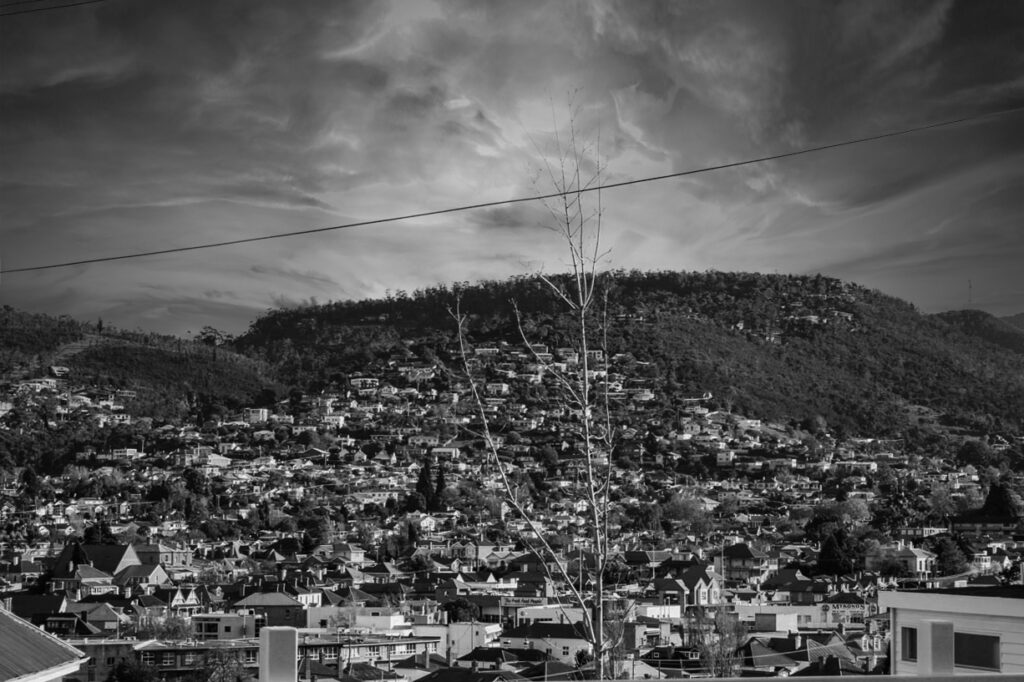
History
Tasmania, or Van Diemen’s Land as it was called, was established as a British colony in 1804. The island of Tasmania was sought after to house a vast number of the convict population that was being sent to Australia from Britain. Tasmania was thought to be an excellent place for the prisons as it was so remote and contained. Therefore would be more difficult for the prisoners. The land was also rich with natural resources making it a great place for establishing new settlements. But Tasmania was already the homeland of the indigenous people who lived there. They were the semi-nomadic Mouheneener tribe, a sub-group of the Nuenonne. This tribe used the area that went on to become “Hobart Town” as their primary hunting grounds.
The French explorers who travelled to Tasmania (but not to settle it) found the tribes to be extremely kind. They reported they were made up of happy family groups just trying to live a simple life. But the cruel invaders from Britain saw the indigenous people as their enemy. The tribes attempted to resist the intruders as they began to take over their land. The British saw this as a violent assault, and soon there were large-scale massacres all over the country. The killing of the indigenous people was deemed genocide by the UN, as the colonizers almost wiped the entire population out during the 19th century.
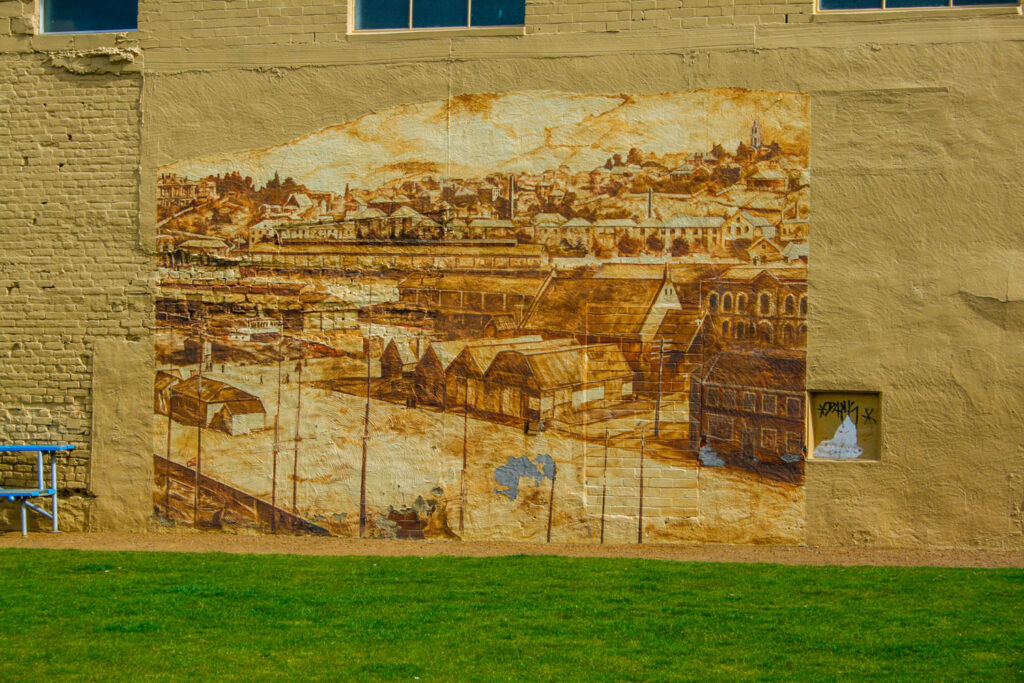
The Ancestral Curse
Many people think that the land in Hobart is now home to an ancestral curse. And this curse is the reason for so many of these hauntings we are going to learn about. The cursed land allows the veil between the living and the dead to be thinned. This, therefore, is said to enable these ghosts to remain here on earth. Perhaps only when reparations are made to the indigenous people, and Tasmania takes more ownership of its past violent actions will this curse be broken. And maybe only then will some of the dark souls trapped on this island be set free.
Hobart Convict Penitentiary
We start our tour at the site of the most haunted spot in Hobart, the Hobart Convict Penitentiary. Over the years, more than 40,000 convicts saw their way through this building. And 32 of them would lose their lives here. Although you can only visit the interior of the site during a guided tour, step into the car back behind the Penetiantary, where you can see into the remains of the brick prison yard.
Picture this (or take a look at the photos in this blog post) inside the building are the remains of the original courtroom and chapel. Inside the chapel, half of the room has been excavated away to uncover the hidden tunnels below. To get down there you need to walk down a set of dark wooden stairs. Once below, you can see the remains of the original 36 isolated confinement cells. These cells were located underneath the chapel.
Despite the chapel being built for the convict, it was also open to the public. The public reported that during services they could often barely hear the preacher over the scream of the convicts below. In 1847 some of the smallest cells called the “dust holes“, were sealed up as they were deemed to be inhumane. These cells were so small the convicts had to crawl inside. There was no light, and the poor ventilation would have made it almost impossible to breathe.
Solitary Ghosts
After the Penitentiary was converted into the Old city Gaol, the solitary confinement cells were almost all destroyed. The area where they once stood was converted into a tunnel. The tunnel was used to transport criminals underneath the city from the docks to the courtroom. This kept them out of public view. But a few of the solitary confinement cells have been preserved.
And one such cell is where we find our first ghost. Despite the cells being painted white, the darkness takes away all but the pitch darkness. The air is cold and damp. Inside these cells, people have seen glowing red eyes appear out of nowhere. And one visitor was thrown violently against the wall. Perhaps these are the spirits of angry convicts, driven mad in the confines of these tiny cells. One of the cells is said to contain an invisible spectre. This ghost likes to kiss women or graze their hair as they pass by.
The Gallows Ghosts
One area inside the tunnels was used as the executioner’s gallows. A small trapdoor on the floor was installed so prisoners could be hung from the low ceiling, and then at that precise moment, the floor underneath them would break away, and they could fall to their death. Guests and guides have reported the smell of fresh blood or urine around this area where the gallows once were, but the source of the smell can never be located. One of the ghosts that is thought to cause this disturbance is Mary McLauchlan.
Mary McLauchlan was the first woman to be executed in Tasmania for the murder of her own infant son. After she was hung, her body was taken to the hospital where she was dissected. This was a common practice for the worst criminals as dissection was seen as a great offence to the dead. Perhaps her angry ghost still haunts the spot where they took her life.
Solomon Blay
One of the Penitentiary’s most famous ghosts is hangman, Solomon Blay. Blay was a famous hangman before he came to Hobart. Over his career, he has ended the lives of over 200 people and seemingly took little empathy in the whole affair. Anyone who touches his noose, which shockingly enough, is still on display, has been known to feel his presence. He is said to hates when people touch his noose. Perhaps because he sees them as amateurs, not worthy of the job.
The Cannibal Ghost
One of the most terrifying spirits that haunts the Penitentiary is that of Alexander Pearce. Pearce was a pretty low-level criminal, having been convicts of forgeries in Ireland, but was sentenced to the penal colonies in Tasmania. In addition to being a forger, Pearce was also an escape artist. He escaped his confinement with seven other prisoners who set out into the seemingly unending forests of Tasmania. The men had no food, no hunting equipment, and soon, they thought they had no choice but to eat each other. When the first of the seven died of a snakebite, he was eaten by his cellmates.
One by one, they were consumed until the last of the other men fell asleep, and Pearce ate them as well. Finally, after more than one hundreds day on the run, Pearce was captured. He confessed to these crimes and was sentenced to be hung and dissected. Before his death, he was heard screaming to the hangman, “Man’s flesh is delicious. It tastes far better than fish or pork.” Today visitors to the old Penitentiary have been known to feel cold breath upon their neck. Perhaps this is Pearce waiting to take a bite!
Courtroom Judge
The old Convict Chapel was partly converted into a courtroom in 1860. One of the judges who served here suffered a massive heart attack while on the job and died right here in his chair. People report smelling rotting meat from time to time near the chair where he expired. Perhaps he saw one of the many ghosts who haunt the site and his heart stopped upon seeing the spectre. After learning about all the ghosts which haunt this site, you can understand why this is thought to be the most haunted spot in Hobart!
Theatre Royal
Walk along Campbell street until you reach the building marked with the teal and gold signage with the words “Theatre Royal” on the front. This was Hobart’s very first theatre and is home to one of the city’s friendlier ghosts. The founder of Cascade Brewery, Peter Degraves, purchased the land near the docks here in 1834. His aim was to build a great national theatre. He employed famed architect John Lee Archer, the same designer of the Hobart Old Penitentiary, to construct a fantastic Georgian-style theatre. Back then, the area of Campbell Street was one of the roughest parts of town. The docksides were home to foul-smelling abattoirs, tawdry brothels, loud and violent factory workers, and raucous pubs. Although Degraves wanted a high-class theatre, the residents of the area were looking for something much less high-brow. Their interest lay in brutal cockfights and boxing matches.
Fred the Theatre Ghost
During one of the performances, an actor was killed during a fight in the basement. His name was Fred, but this wouldn’t be the last anyone heard from Fred. Throughout the years, Fred has been known to hassle people who stay in the theatre too long, yelling at them to leave. He has been known to sit in the dress circle during shows, but those who speak to him with reverence get along pretty well with the ghost.
The Great Fire
Over the years, the area eventually was gentrified, and in 1920, the theatre was glamorized for the new residents. This included an overhaul of the interior with red velvet upholstery, gilded ceilings, and a crystal chandelier. But theatre isn’t the most lucrative business. Even with the new interiors, they struggled to keep up with the costs of running such an establishment. Performers complained of holes in the floor, cockroaches infesting the costumes and most dangerous of all: faulty wiring.
One night, in 1980, the theatre caught fire. It began backstage and spread to the main auditorium. A fire like this, unchained, should have taken out the entire building. But here is where we find our spectre. It is rumoured that the only reason the fire didn’t spread as far was that the fire curtain was dropped. But no one was there to have dropped the curtain. No one…except Fred! Fred might be a little grumpy, but he seems to love his new home and he did as much as he could to protect it!
Wapping
Hunter Street runs along Macquarie Wharf; this area was once known as “Wapping.” As mentioned before, this dockside neighbourhood was rough! But the area was also where everything was going on. It was the economic center was where ships were being built, and whales and seals were slaughtered for sale and export. Overcrowded boarding houses poured out onto the street, and there were dozens of pubs to serve these rowdy residents.
As the buildings were constructed so close to the water they were constantly being flooded. This resulted in diseases running rampant through the area. Human waste was just thrown out onto the streets adding to the smell. It was a slum and despite all this filth, it was also the prominent red-light district. It was here that the very first gallows of the colony were built in 1806. James Keating was one of the first people publicly executed in Hobart. He was sentenced to death for theft of pork from government stores. It seems rather extreme for the crime. Over the years hundreds of people were hanged here for crimes ranging from murder, robbery, sheep-stealing, rape, forgery and sodomy. Many of these spirits still haunt the site. Their ghostly images reflecting in the water where no one is really there.
Gibbet
In addition to the gallows, this spot on our waterfront was also home to the infamous gibbet. A “Gibbet” was a structure that would hold the deceased bodies of executed criminals. As a part of the British Murder Act of 1752, the bodies of murdered criminals could not be buried. Instead, their bodies would either be left to rot, dissected or eaten away by animals. This would have been a rough site to see as you walked to work every day.
These horrifying images and acts were put on display here in the hopes that witnessing these punishments would deter future criminals since Wapping seemed to be the hub of criminal activity. The gibbet here in Hobart was also located near the docks so that newly arrived convicts leaving the boats would be met with this awful sight upon arrival. A reminder of what fate awaited them if they did not behave.
The Drunken Admiral
One of the most popular restaurants and bars on the Wharf is the Drunken Admiral. The area where the Drunken Admiral now stands used to be the warehouses belonging to George Peacock. George Peacock started up his jam-making business here in 1869. Tasmania was a massive producer of fruits as the climate was warm enough to grow exotic plants but not as arid like the rest of Australia to ensure the crops were plentiful. Peacock opened his factory along the wharf and employed many of the citizens of Wapping.
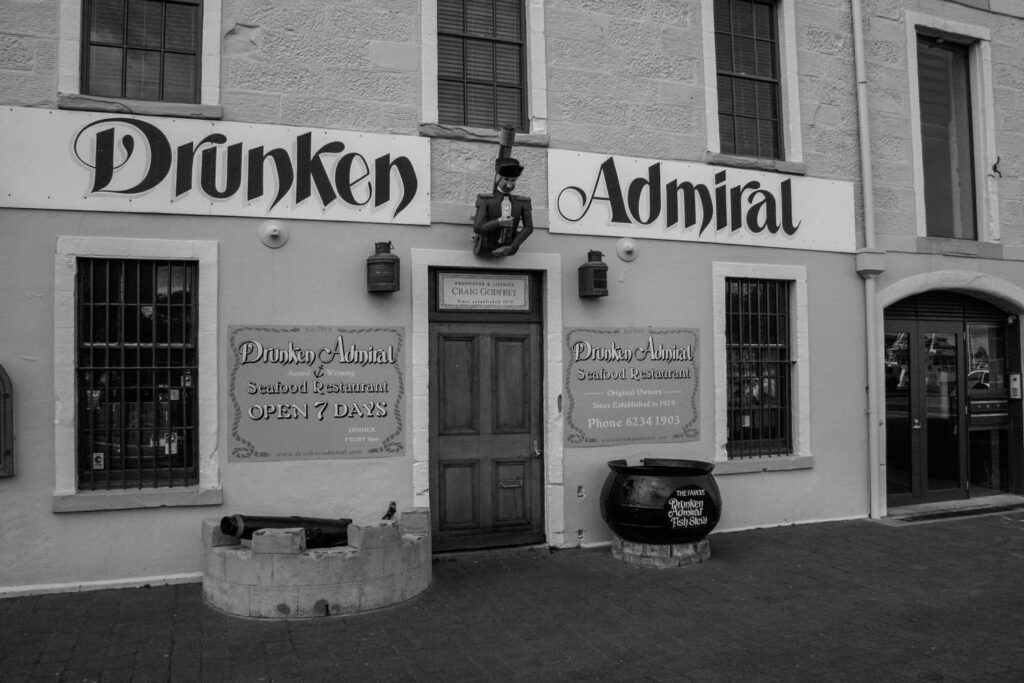
Henry Jones
One worker was 12 years old, Henry Jones. Henry Jones, unlike many other people in Wapping, was a dynamic entrepreneur from an early age. When Peacock died, Henry Jones had earned enough money to buy a controlling interest in the company he had started working at. He continued running the Jam Factory until his death. Today, the name “H. Jones & Co.” is still emblazoned on the exterior of the building. The ghost of Henry Jones has been said to appear inside, perhaps trying in his own way to oversee the operations of the restaurant that replaced his jam factory. An entrepreneur to the end.
Little Millie
Another ghost that inhabits the restaurant is a little girl named Millie. Millie is a little trickster known for untying chefs’ aprons, tying people’s shoes together and even turning off the gas stoves, especially when the chefs are in the middle of a busy service. Millie has bright red hair and wears a bonnet making her appearance look like she lived 200 years ago. Henry Jones married Alice Glover, who was known for her bright red hair. Jones and Glover had three sons and nine daughters, so one can only wonder if one of these ghosts is the daughter of Henry Jones as the two of them have been seen haunting together.
The Story of ‘Rocky’ Whelan
Walk along Franklin Wharf until you come to Elizabeth Street. From there, head north until you reach the intersection of Elizabeth Street and Collins Street. Collins Street was named for Hobart Lieutenant Colonel David Collins in 1811. This street was one of the first places settled in Hobart. Early settlers erected their tents here as this part of the city was home to Hobart creek, where they could easily draw their water supply. Some of the town’s earliest commercial enterprises grew up around here. One such shop was a little boot shop where infamous murderer John’ Rocky’ Whelan was captured. Although the old Rivers footwear compnay isn’t the original boot, it is perhaps the more modern incarnation of the original shop once located here.
John ‘Rocky’ Whelan was an Englishman, convicted and sentenced to seven years in Tasmania. But upon arriving, he escaped custody and went on to become a prolific highway robber. Eventually, he was caught once more and, this time, sentenced to eighteen years on Norfolk Island in New Zealand. After that prison closed and he was scheduled to be moved to Port Arthur. Like many convicts, Rocky feared Port Arthur for its brutal reputation. So during his relocation, he managed to escape once more! He made his way into the rugged bushland near kunanyi/Mount Wellington, where he hid in a cave, now named ‘Rocky Whelan’s Cave.’ But it wasn’t just hiding that Rocky was doing in this cave…
Arrest
Becoming more and more daring after being on the run for so long and not being captured, Rocky paid a visit to the bootmaker on Elizabeth street. The shoemaker noticed a name on the bottom of the shoes. The name “Dunn” was embossed on the bottom of the boots. The shoemaker recognized the name right away as Dunn was a rich magistrate who had recently gone missing, suspected dead. The shoemaker managed to get a hold of the authorities while Rocky awaited his shoes. They arrested Rocky on the spot when he came to collect the shoes. When Rocky was arrested, they found he was wearing all the clothes of the murdered Mr. Dunn. He confessed to the killing, and the police found the decomposing body of Dunn inside the cave. Rocky went on to disclose to the murders of five other people while in custody.
When he was questioned, Rocky confessed that his harsh and violent treatment in prison set him on a course to, “go to war against society“. Rocky’s police record showed that during his time in prison, he had 112 offences and that amongst other punishments, he had been flogged 12 times. Rocky was hanged for the murders in 1855 but his spirit is said to still haunt the street where he was captured, perhaps wishing to rewrite history.
Elizabeth Street Mall
Continue along Elizabeth Street towards the Elizabeth Street Mall. Look up from the first-level chain stores to study the beautiful old architecture found here. Inside the bright yellow Kodak building, see if you can spot the ghostly image of the young woman who is said to haunt the halls and peer through the windows.
She goes by the name Beryl and may be the ghost of an old cleaning lady, as many of her sightings have caught her trying to clean up. Items move in the lunchroom and footsteps are heard down empty corridors. When the building is closed for the day, security guards have heard the sound of a sweeping broom and lights turn on and off on their own. Although, for the most part, she is a friendly ghost, she has been known to knock over displays, perhaps because she dislikes the way they were set up.
Victoria Tavern
Walk back to Collins Street and continue on till you reach Murray Street. From here turn down back towards the water until you reach #30. This is where the old Victoria Tavern once stood. The pub opened in 1836, and before it closed, was one of the oldest pubs in the country. What made this bar so iconic were the rumours and stories of its underground tunnel. Under a trapdoor in the basement of the Victoria Tavern was a convict built brick walls. This wall is said to supposedly cover up the entrance to the old tunnel system. We already know that there were tunnels that connected the old Hobart Gaol to the docks. But rumour has it that there were other underground tunnels as well.
One of these tunnels joined the Victoria Tavern to St. David’s church, located across the street. This allowed the priests to secretly make their way from the church to get a shot of rum in the pub without being seen by the public, or even perhaps, by other judgemental priests. One of the most haunting stories is that these tunnels ran all across Hobart. Perhaps made by the skilled Tasmanian miners. The tunnels were thought to be so immense that people got lost down there and somewhere underfoot are still the bodies of these lost spirits. We know this to be more than just a rumour because when the drainage tunnels under Parliament House were being repaired, workers uncovered an old skeleton of an escaped convict when had attempted to escape via these tunnels. Who knows how many other spirits are down there waiting to be found…
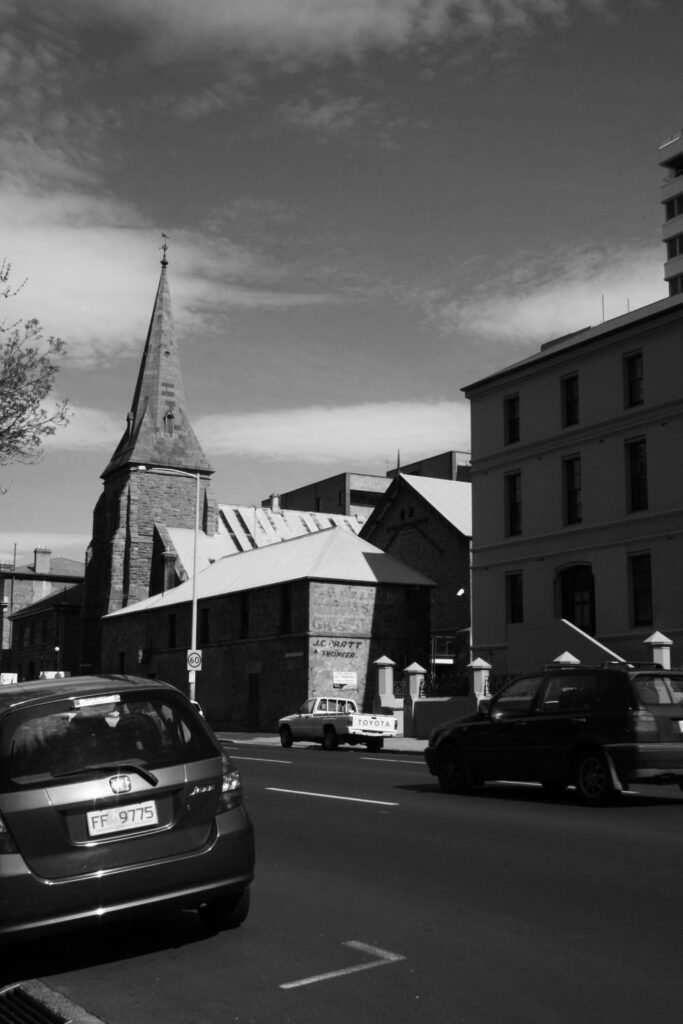
St. Mary’s Hospital
Continue along Murray Street and turn left along Davey Street. At the corner of Davey Street and Salamanca Place is St. Mary’s Hospital. The hospital was opened as a private hospital in 1841. The building was designed by the great William Porden Kay for Dr. Edward Samuel Pickard Bedford. The hospital had room for sixty beds and was meant as a ‘labouring class’ hospital. Bedford wanted to use the hospital as a training school for other doctors. But the Royal College of Surgeons refused to recognize him. Although he went on to great success in New South Whales, one has to wonder why the College of Surgeons refused to allow him to start a school. Perhaps his skills weren’t what they were supposed to be…
Many people report seeing the ghostly figure of a young woman in the windows on the second floor here. Perhaps she is the lost soul of one of the patients from the hospital who never made it out alive. The hospital closed in 1862 due to a lack of funds. After which it was used by the Lands and Survey Department and then the Health Department.
Parliament House
Walk along Salamanca Place towards the great Parliament House and gardens. Parliament House was first built in 1840 as the original Custom’s house. Here, any ship’s imports and exports would need to be taxed, and the customs paid for. Eventually, when the old Parliament house got too small, the government was moved into this large sandstone structure.
The ghost which haunts the halls of Parliament House goes by the named Albert. And unlike some other spirits, we know precisely who this Albert is. Former Premier Albert Ogilvie was an Australian politician and Premier of Tasmania from 1934 to 1939. In 1939 Ogilvie took ill when on the golf course and died later on that evening in his chambers, right here in the Parliament House. His ghost is known to walk up and down the corridors, his footsteps echoing across the building. When people follow the sounds, no one is ever there. The speaker’s old chair, held in the House of Assembly Chamber where Ogilvie once sat, is also a place where people feel a strange, cold presence from time to time. Nice to see such a dedicated politician who never wants to leave his country behind.
Lenna of Hobart Hotel
Continue walking along Salamanca Place until you reach the famed Kelly Steps. Up these steps, you’ll be led to the historic Battery Point neighbourhood. Up from the Kelly Steps, make your way to the Lenna Mansion.
The Lenna Mansion, now the Lenna hotel, was owned by shipbuilder and merchant Alexander McGregor. The house was built at great expense in 1873. McGregor was one of the greatest Tasmanians, bringing industry and wealth to the city. He died on October 5th, 1902, in his bed beside his beloved wife Harriet in their treasured home. And some people say they never left!
Alexander died of natural causes, but some suspect the case was not the same for poor Harriet. They say Harriet, perhaps driven mad by grief, jumped off the roof of the Lenna to be with her husband once more. Today, the old residence has been turned into a hotel and guests often report hearing ghostly footsteps, especially up on the roof where Harriet is said to have jumped.
Princes Park
Located off nearby Battery Square is the hauntingly quiet Princes Park. Princes Park was built upon the old military Battery areas that once stood here, giving the name for the entire neighbourhood. This Battery was meant as a guard tower and defensive outpost. From this high vantage point, guards could look out for invaders, pirates or even escaped convicts. Below the Battery were a large set of tunnels connecting small rooms which acted as ammunition storage. Despite the Battery being destroyed, these tunnels remained, although they have been barred off from the public in recent years.
The entrance to these tunnels was located near Castray Esplanade. A ghost known as Edward still haunts these tunnels. Many people suspect his hauntings were the reason the tunnels were actually closed. Edward made his home here in the 60s and 70s, and he would frequently get drunk and run around in the tunnels. His screams echoing across the now upscale neighbourhood. Edward passed away, but his ghost is known to be heard echoing inside the tunnels to this day.
Stowell Residence
Walking along Hampden Street, turn up Stowell Street to find at the end of the dead-end avenue, the grand Stowell residence. The residence was first built in 1830 for a wealthy colonial family who moved to Hobart. The home was best known for its incredible gardens. Over the years, it passed hands many times, once being used as a hospital. Today the building is used as an apartment complex.
Since World War II, the ghost named “the grey Lady” is reported to haunt the halls. People who work late at night say they saw the figure of a woman wearing an old hooped dress wandering the hallways. Her face appears to be grey, hence her name. The legend of the Grey Lady states that she was murdered by her father when he discovered she had fallen pregnant by a former convict. Furious at this alleged offence to her modesty, her father threw her down the stairs. Today, she morosely haunts the halls, crying for her lost child.
Narryna Heritage Museum
End the night off by making a stop at the historic Narryna Heritage Museum. The Narryna Heritage Museum was originally the home of a wealthy merchant, built in 1830. Wealthy homeowners often employed convict women from the nearby Female Factory to perform household duties as a part of their sentence. One such woman was named Polly. Polly fell pregnant during her time in the Narryna residence, and sadly, she died in the house before giving birth to her child. Rumours vary as some say she fell down a flight of stairs where she met her untimely end, but others say she was pushed. Either way, Polly’s ghost is a sad spirit, hopefully wishing she could have known her dear child.
Hopefully you enjoyed this ghost tour around Hobart and even if you weren’t spooked, learned a lot about the interesting history that haunts this town.
Happy Travels, Adventurers!
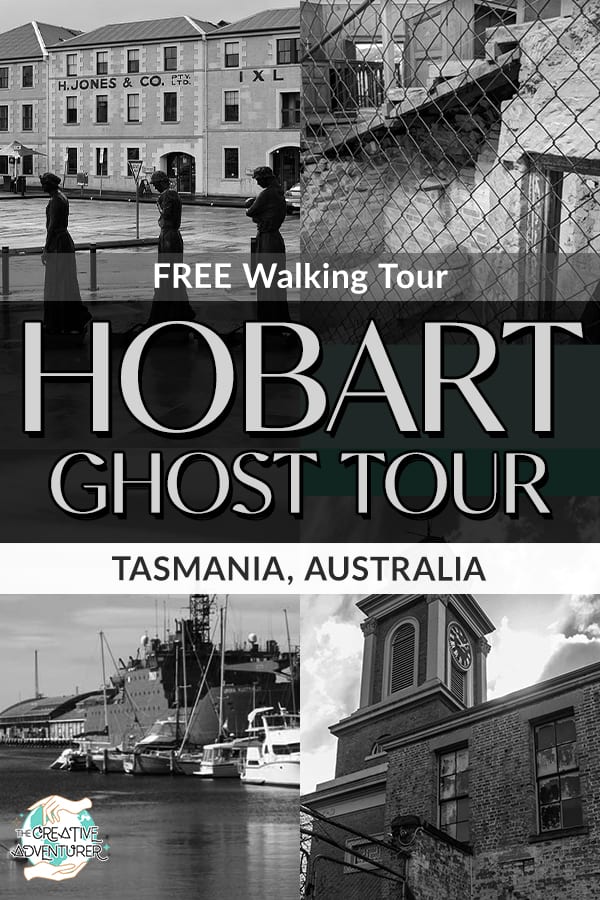
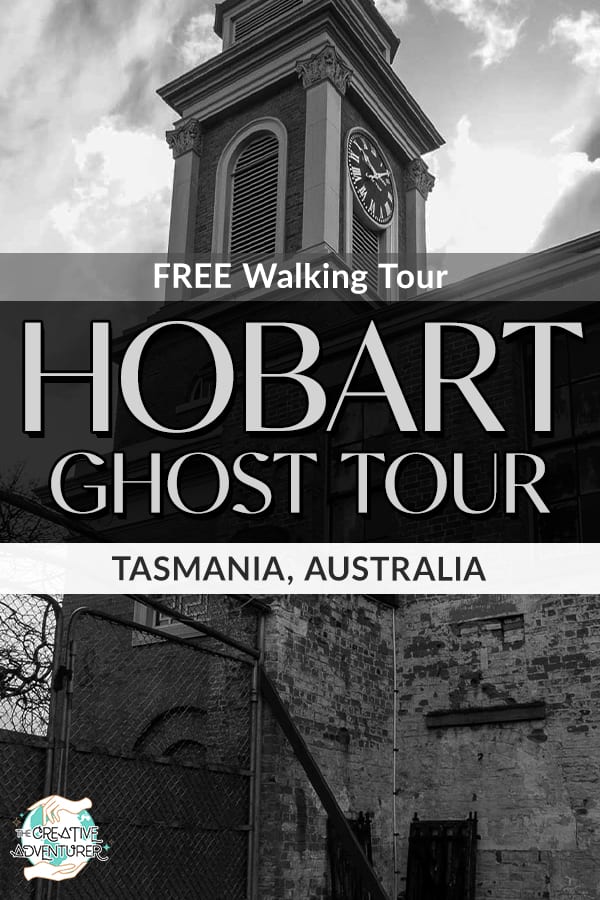
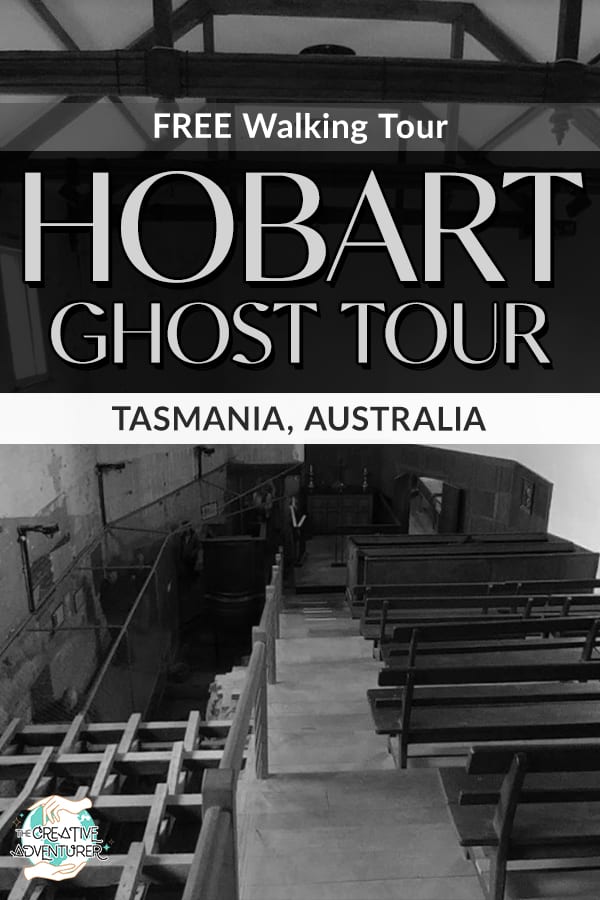
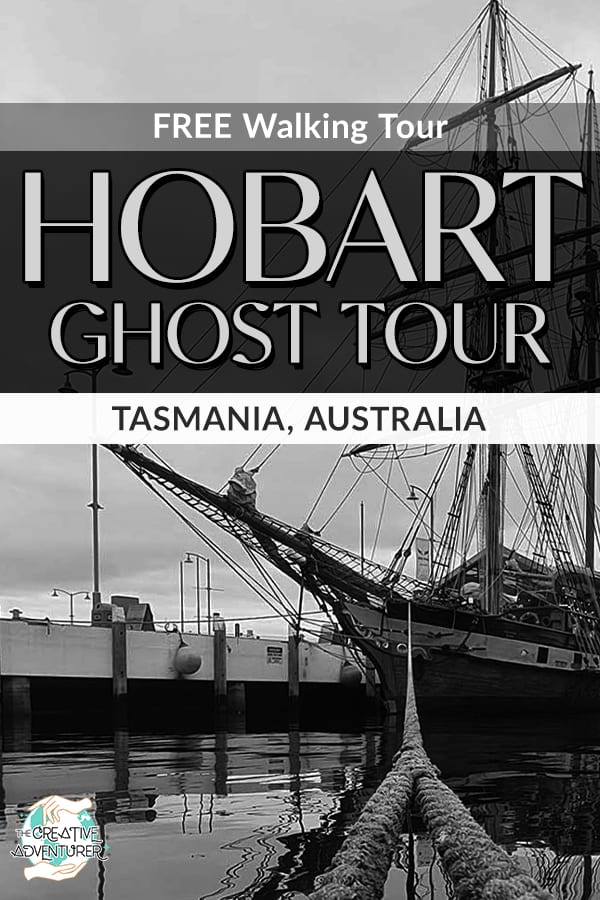
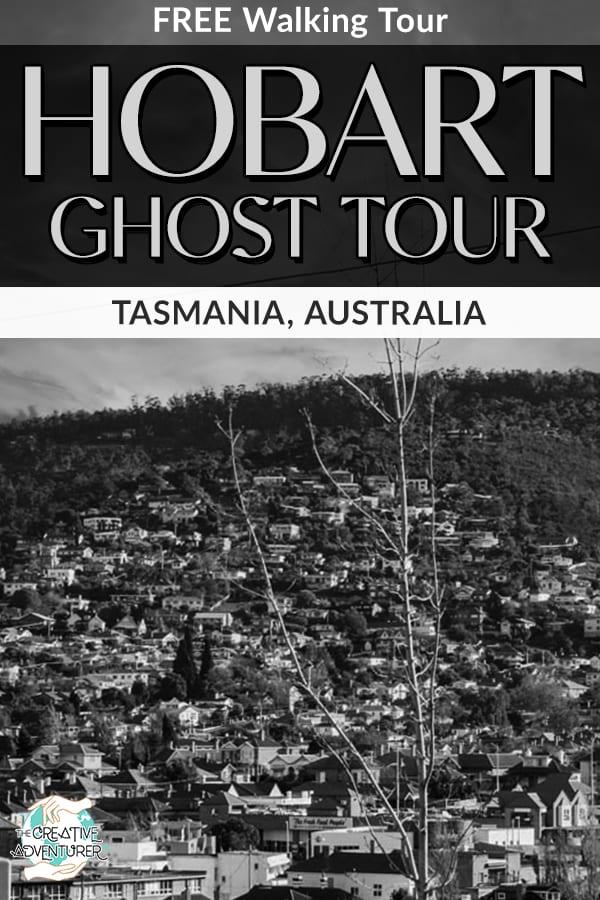
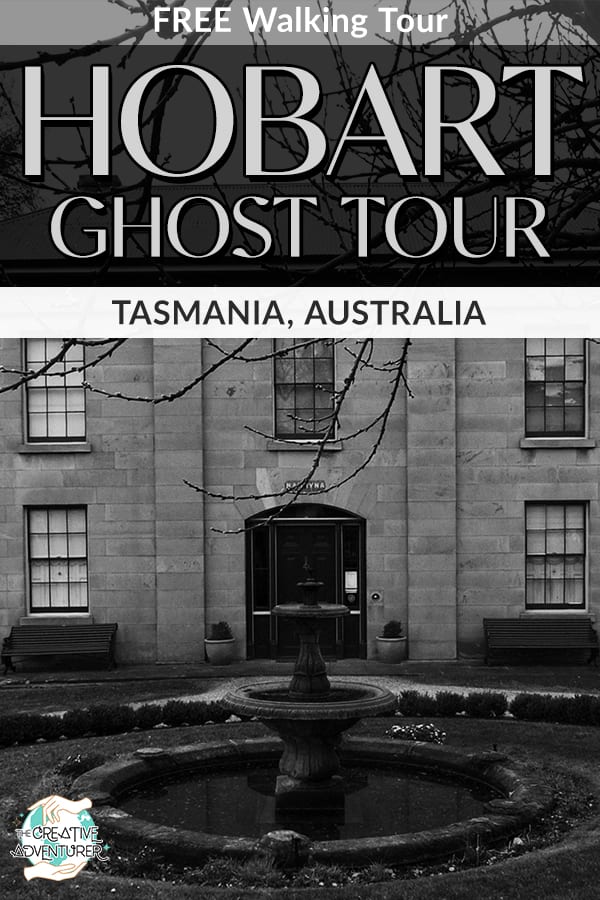


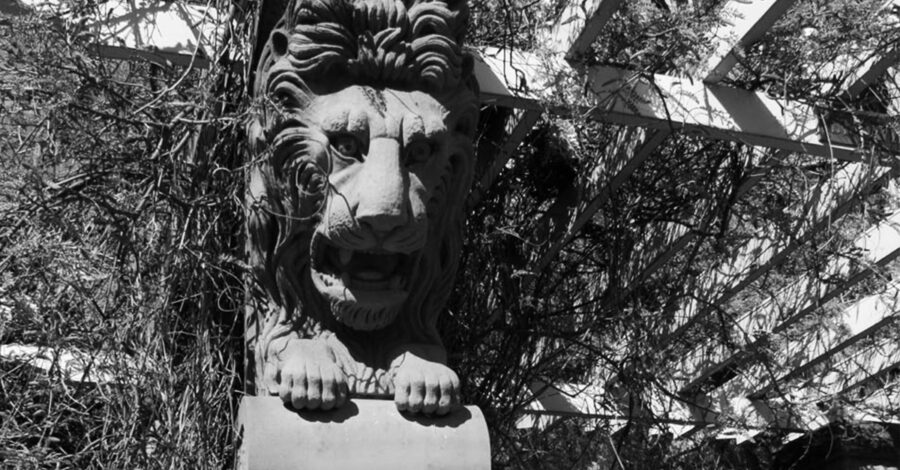
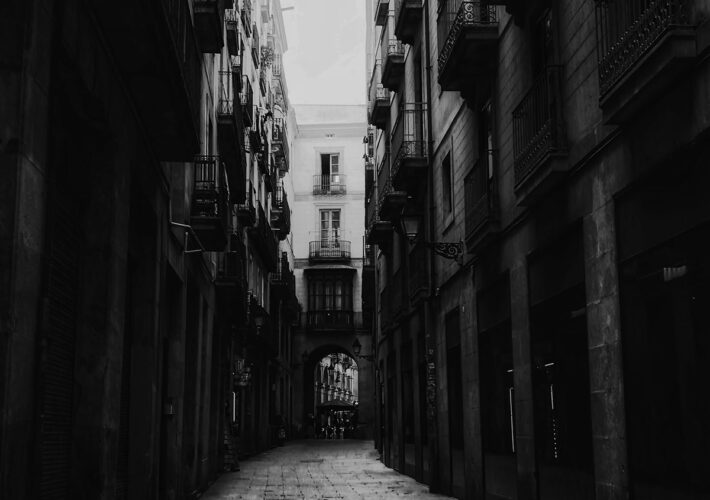
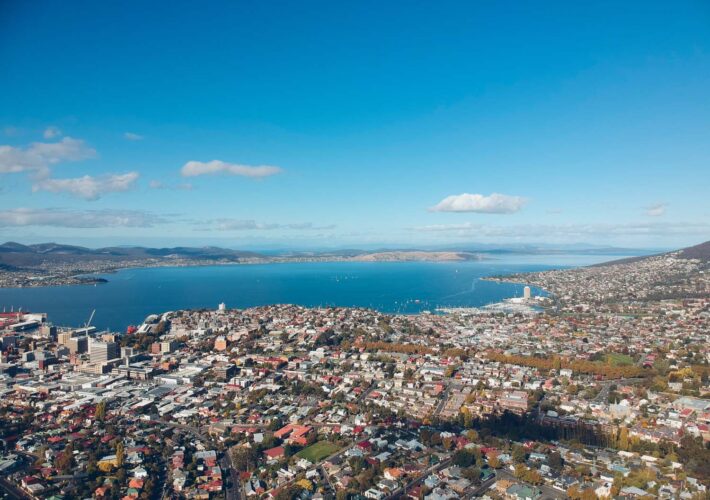
Leave a Comment